Tank, helicopter, “zaporozhets” and state emblem
The Soviet symbols still present in the Caucasus
25 years ago, on December 25, 1991 the Soviet Union officially has seized to exist.
On December 8, 1991 the heads of the USSR co-founders – Russia, Ukraine, Belorussia – signed the Belovezh Treatyon dissolution of the Soviet Union. The Transcaucasian republics (called so at the time) had declared their sovereignty prior to that. Georgia – on May 5, 1990, Armenia – on August 24, 1990, Azerbaijan – on October 18, 1991.
Wars and famine followed, lack of electricity, heating and water. But this is a different story.
Cities have been built and changed, generations have changed in more than 70 years in the Soviet Caucasus. The question of whether the Soviet Union has gone is being discussed in the social media by the young people, born after its dissolution.
We too decided to celebrate the meaningful date. And did it in two ways. First comes the photo story of the Soviet artefacts in the region. And then – a short poll on the streets on what was good and bad about the Soviet times.
As usual in JAMnews reviews, the South Caucasian cities are listed in alphabetical order in accordance with local spelling, bearing no connection to JAMnews opinion or accessment.
Baku
‘Zaporozhets’

Icheri Shekher, the Old Town in Baku prides on this ‘zaporozhets’. The white lane around it is to underline, that it occupies the lawful place.
Old ‘zaporozhets’ are few and turning into antiques these days. Production of the Soviet subcompact seized in 1994. Ten years ago it could be bought at Baku auto market for $100.
Lenin

This bust of Lenin in Mashtaga settlement used to belong to Dilvari, who has moved elsewhere. Before leaving he had carried the bust away from his house and told the neighbors he would be back for it. That was ten years ago. Lenin is in good shape, still waiting for Dilvari.
The personal cult of Lenin in Azerbaijan was a standard Soviet thing. School textbooks told stories of Lenin being an exemplary student. ‘He was crystal honest’, myy first teacher used to explain back in 1987. Ten years later we learnt something else – of the Lenin order to burn Baku down is case the attack on it fails. A lot of effort was invested then in changing the names of streets and squares in Baku and bringing down the bronze monuments.
Soviet style
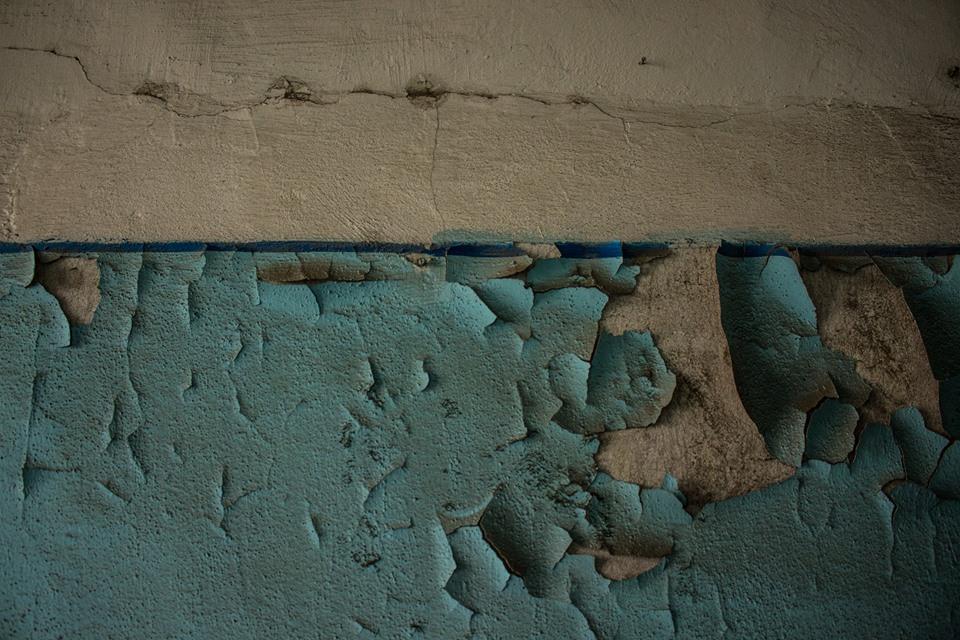
Josef Brodsky in his essay ‘Less Than One’ gave the detailed description of the Soviet method to paint walls.
All public spaces in the USSR were painted in standard manner – bluish gray paint from the floor up to the brown stripe at the level of eyes and then comes whitewashing.
It turned out to be a problem to find such an ornament in Baku after numerous repairs. Which is a pity, because it serves a good illustration to the Soviet heritage with it ruthless standardization of everything and imperial pathos.
The photo was made in the abandoned children’s policlinic in Sabunchin district in Baku.
Yerevan
Soviet emblem at the railway station
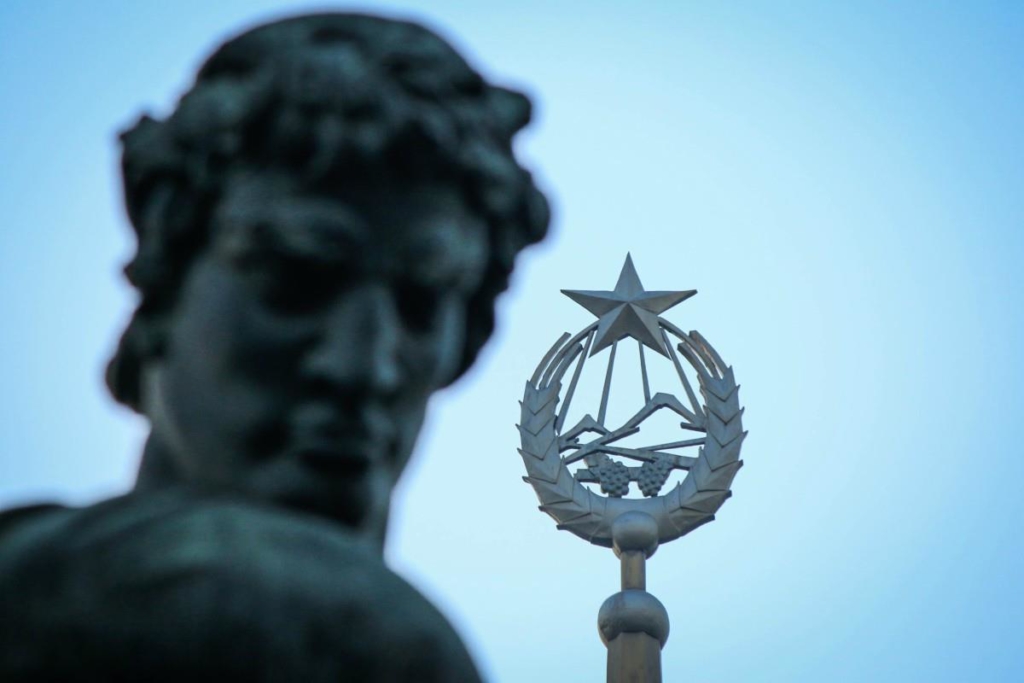
The Yerevan railway station with the David Sassunci monument across the street was opened in 1956 but without the famous 55-meters high spike with the USSR emblem on top. It was constructed 4 years later and still has the emblem.
Another Soviet emblem
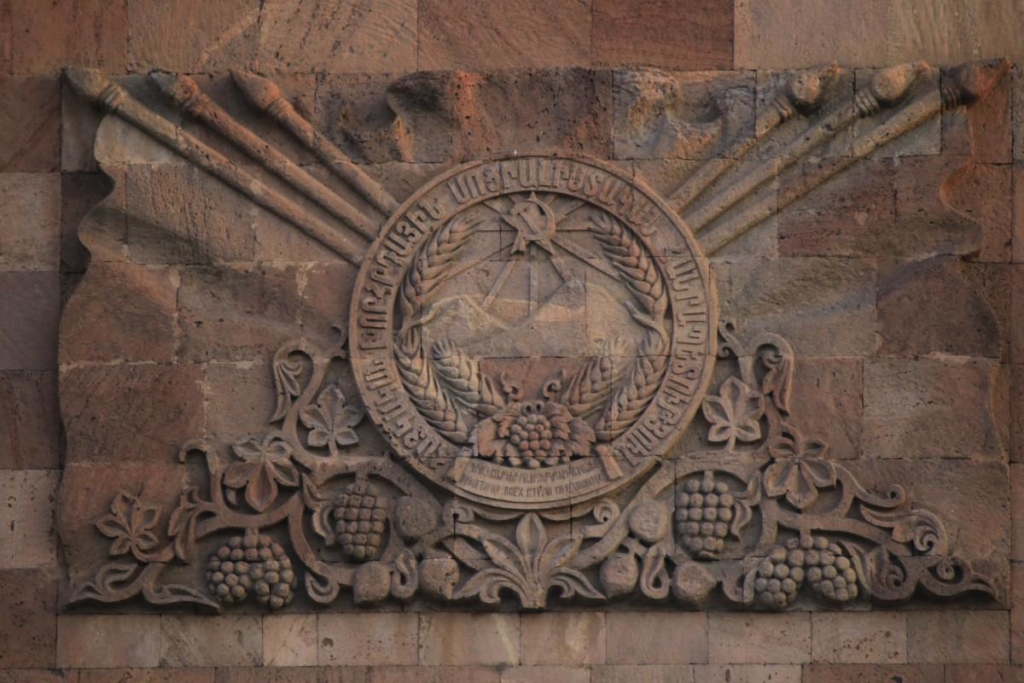
The office of the government situated on the Square of Republic (former Lenin Square) bears the Soviet emblem on pink tuff, the inscription ‘Armenian Soviet Socialist Republic’ and the best known Soviet slogan – ‘Proletarians of all countries, unite!’.
Another Lenin
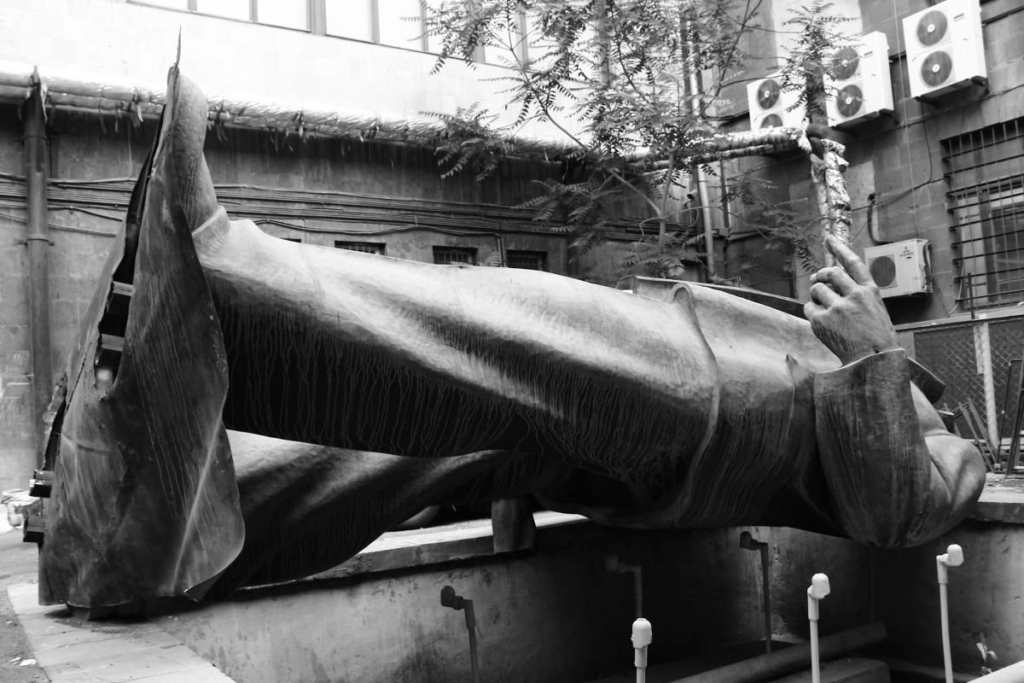
The beheaded statue of Lenin lies in the backyard of the Armenian National gallery. The head is kept in the gallery, but not as an exibit. The statue was established in 1940 and removed on April 13, 1991. The pedestal was removed only in 1996.
Sukhum
Vox-pop by Anaid Gogoryan, Sukhum
Tbilisi
Mosaic
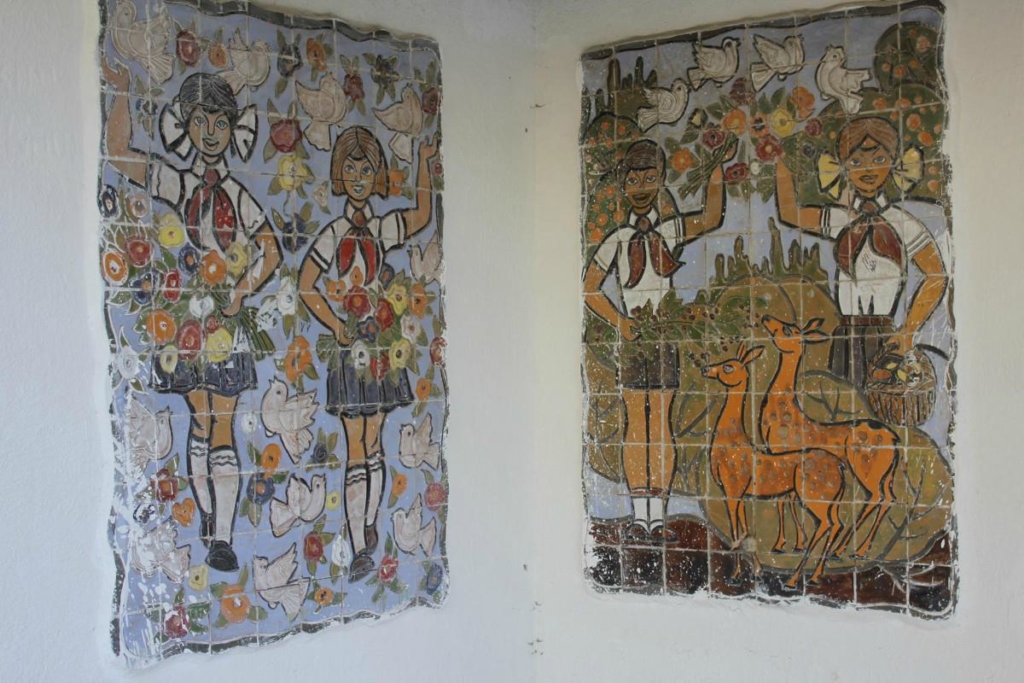
This is the mosaic at the bus stop in Tskhvarichamia, the popular summer resort, an hour drive from Tbilisi. Woods, mountains and clean air made it an ideal place for the youth camps in the Soviet times, warmly remembered in social media for tasty cutlets, morning exercises and first love. On weekends the usually empty bus stops like this one were full with children waiting for their parents.
Soviet tank
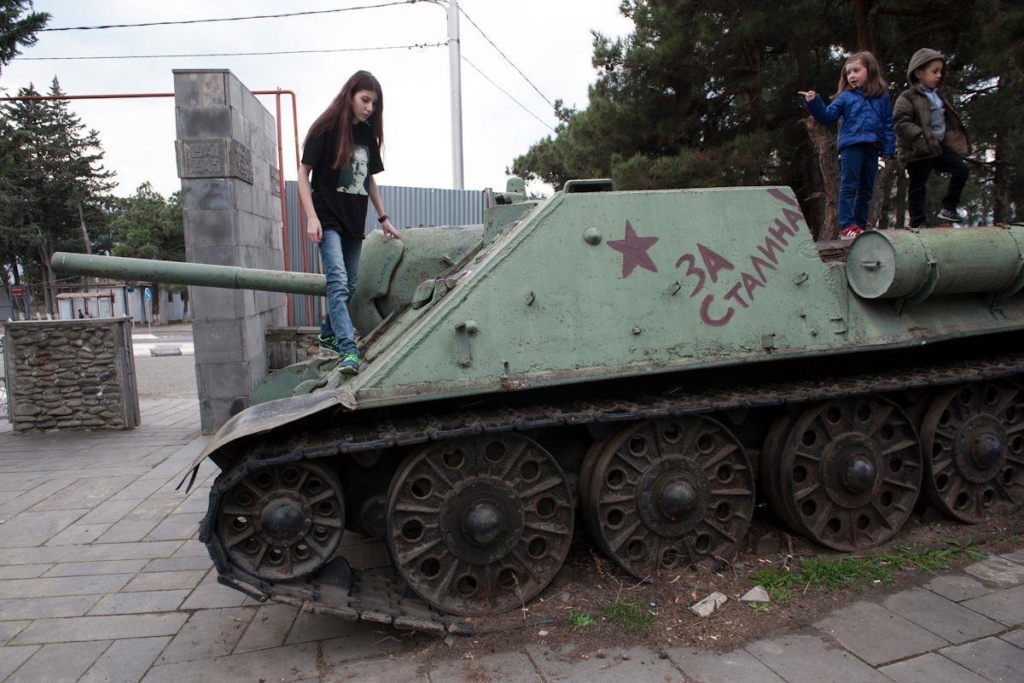
Tatia Murachashvili, 22 is obviously one of the youngest Stalin fans in Georgia. She makes photos on a Soviet tank wearing a T-shirt with Stalin. Her grandfather was his dedicated follower. The tank stands at the Kukia cemetery in Tbilisi. Nobody knows how it got there.
Lenin again.Lenins, to be precise

The famous Lilo megamarket is situated on the outskirts of Tbilisi. In the Soviet times it was the place for plants and fabrics, one of them producing the details for the statues of the Soviet leaders and labor heroes. The fabric is still there, though abandoned. Stalins and Lenins are piled in the corner as garbage.
Vox-pop by Khatia Gogokhia
Tskhinval
The Jewish shop
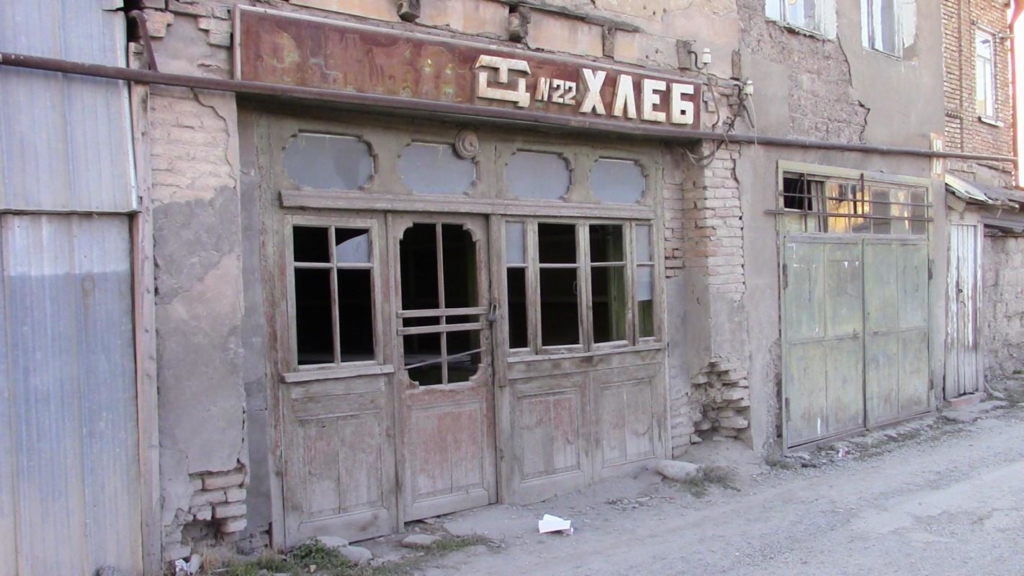
Shop #22 sold bread in the Gagloev Street in the area where the Jewish community used to live in the city of Tskhinval. In 1989, when first signs of the confrontation between the Ossetians and the Georgians started to emerge, almost all members of the community left.
Irina Parastaeva is 64, and she remembers the shop since she was four. She used to come to Tskhinval from the village of Bakatykau together with her grandmother to visit Eva, a relative. Eva was single and prided herself on having been a member of the Communist party since she was 17.
The shop specialised in selling fabrics and was run by a Jewish family at the time. Once Irina saw a doll and asked her grandmother to buy it for her. The seller refused to sell the doll, and Irina still remembers the pain she felt from the refusal. And she made a doll herself, using sprigs for legs and cloth for the rest of the doll body. And she’d play with it for a long time.
After the 1970, the shop started to sell foodstuffs and bread. And it was closed for good after being damaged during the 2008 August war.
‘Iriston’ hotel
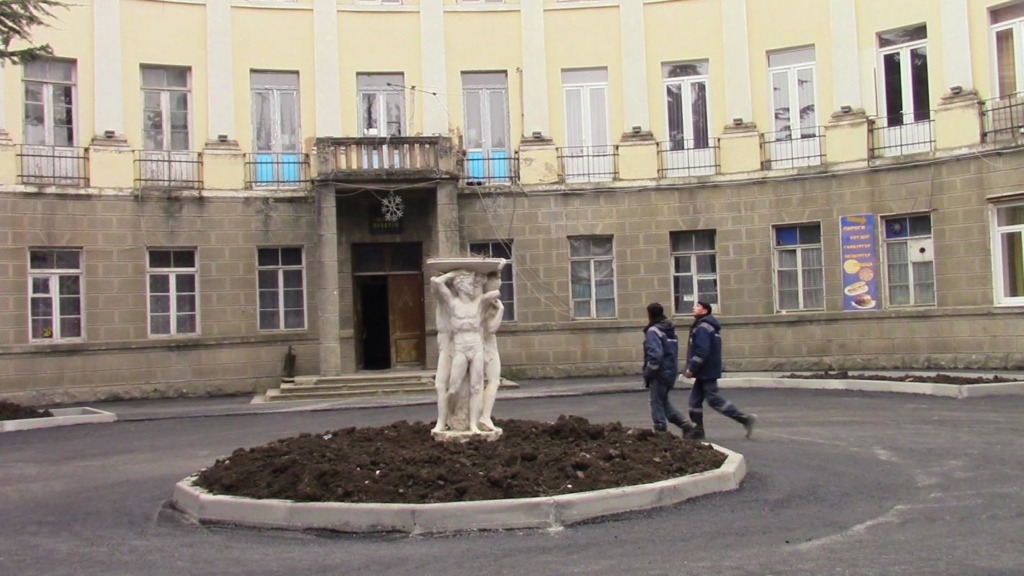
‘Iriston’ was built in the infamous 1937. Georgy Beteev used to live there in 1957 coming to Tskhinval from Kvaisa, where he worked at a mine. He enjoyed staying in clean and quiet Tskhinval wth it`s wine shops and cheap and rich market.
Helicopter
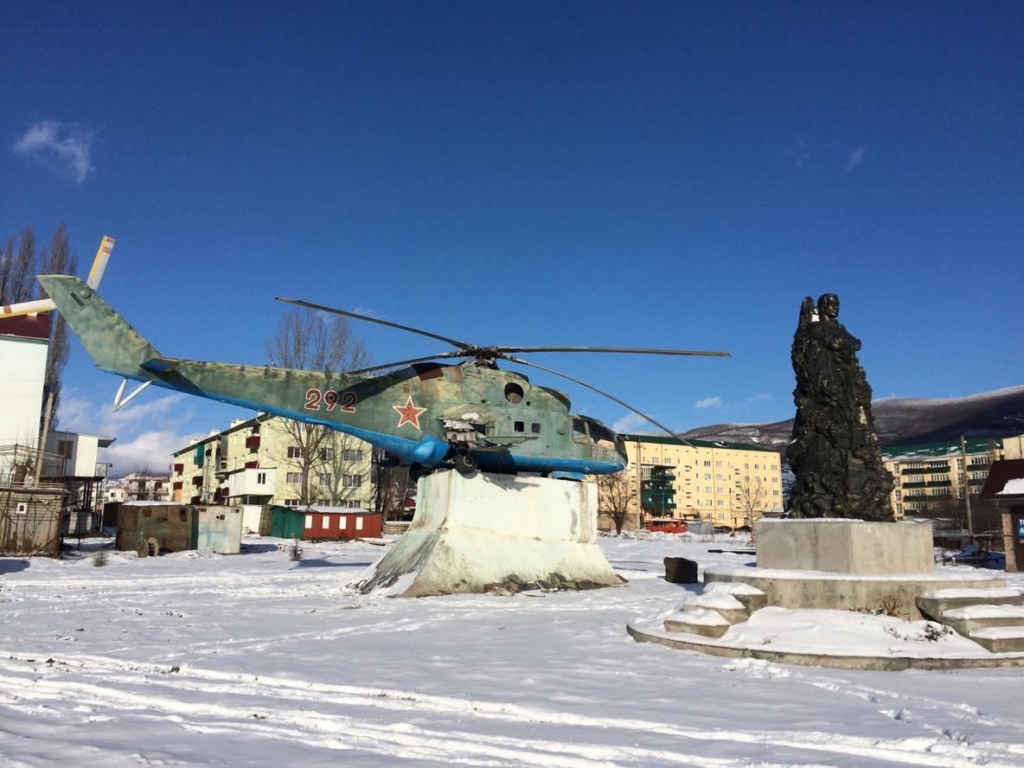
The helicopter in Bam (a Tskhinval district) was established in the 70-s. South Ossetia was a part of Georgia then with the helicopter regiment base near the village of Nikozi. The headquarters was in Tskhinval and the pilots were living in Bam/
Vox-pop by Irina Yanovska
The opinions, expressed in this article convey the author’s views and terminology do not necessarily reflect the views or opinions of the editorial staff.


















